2-3 History of the fish bank (15)

The Origin of Fish Market in Tokyo
Early Edo Period
Around 1644, fishermen supplying fish to the Edo shogunate began selling the surplus at Uogashi near the Nihombashi Bridge. This is regarded to be the origin of the fish market in Tokyo.
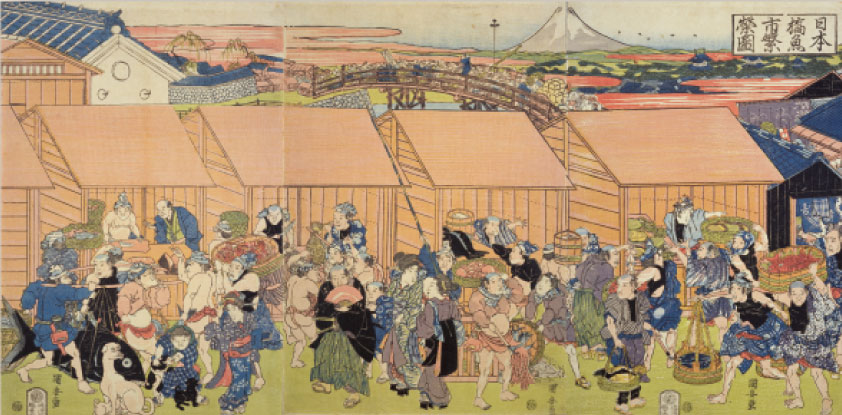
Growth of the Fish Market along the Nihombashi River Bank
Middle and Late Edo Period
As the starting point of the Tokaido and other main highways, Nihombashi flourished as the commercial center of Edo. The Uogashi area was also booming with fish brought in from Tokyo Bay and rivers and seas in the Kanto region.
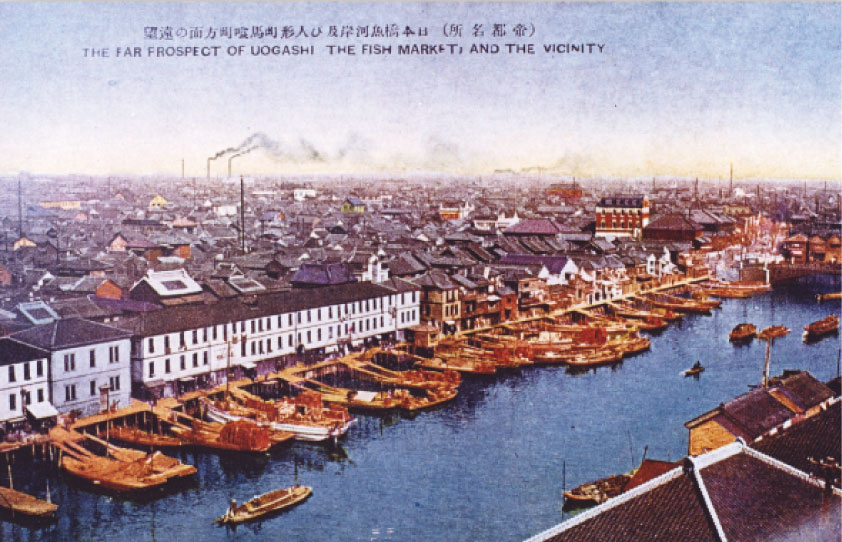
Nihombashi Fish Market
Meiji Era
In the Meiji era (1868-1912) Nihombashi developed further as institutions, such as the Bank of Japan and the Tokyo Stock Exchange, were established, transforming the cityscape. However, it is said that the fish market remained unchanged.

Great Kanto Earthquake
1923
On September 1, 1923, Tokyo City was hit by an earthquake with a magnitude of 7.9. Massive fires broke out at the fish market. Despite the efforts of people working there, the fire could not be contained, leading to many fatalities.
Owned by Chuo Ward Kyobashi Library
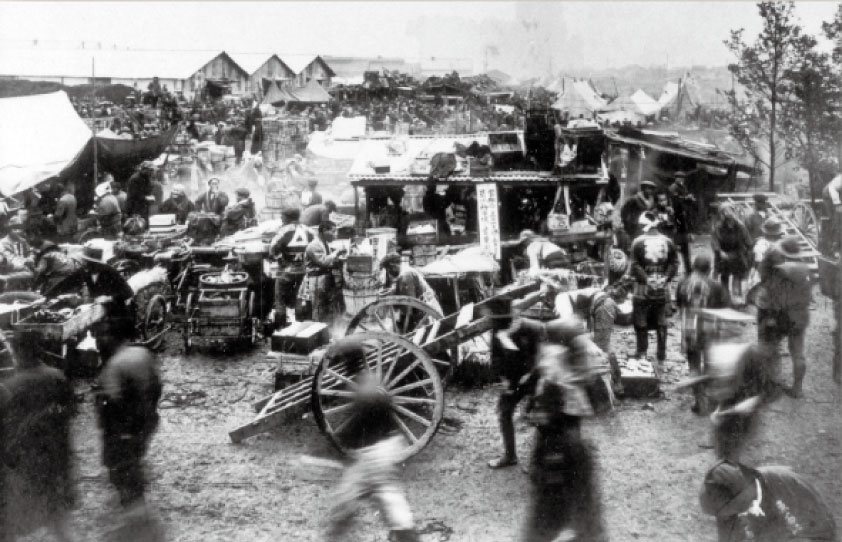
Temporary Fish Market at Shibaura Reclamation Site
1923
On September 17, 16 days after the Great Kanto Earthquake, the market reopened as the Temporary Fish Market at the land reclamation site of Shibaura, Hinode-cho. The temporary market had about 10,000 visitors per day, but it was very small, making it difficult to continue operations on a permanent basis.
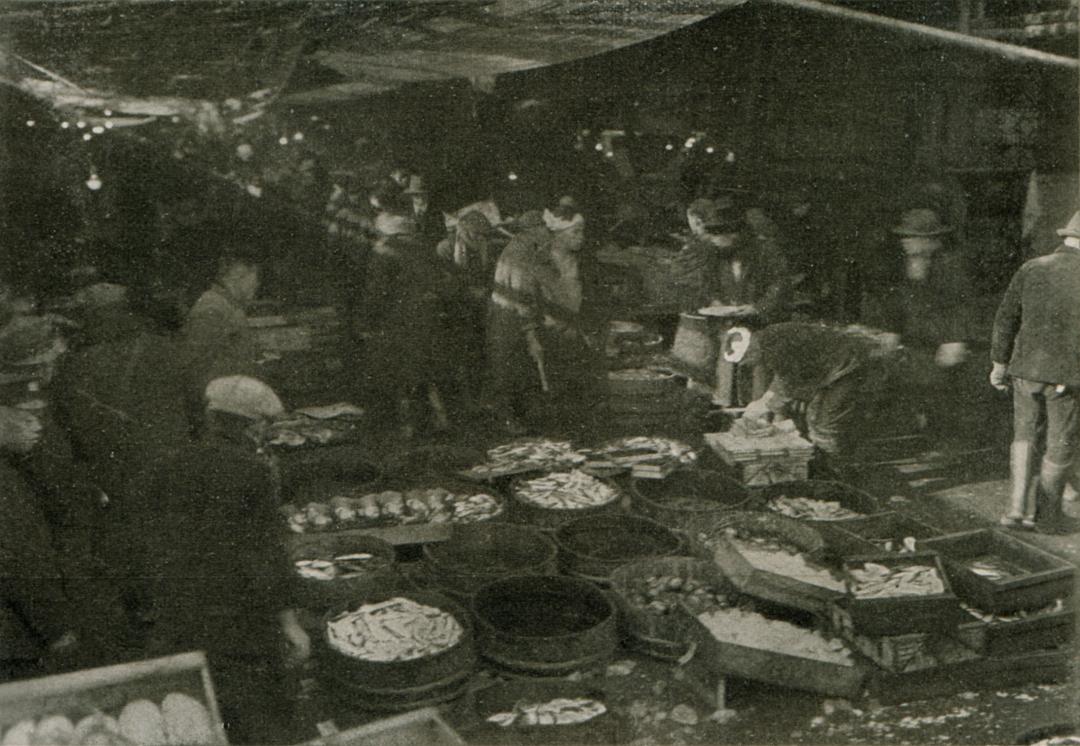
Temporary Fish Market Organized by Tokyo City
1923
Due to the difficulty of carrying on business in Shibaura, Tokyo City constructed the Temporary Fish Market at the former site of the Naval Technological Research Center in Tsukiji. Although "temporary," the new market was five times larger than the old one in Shibaura, and also had a municipal-operated refrigerator. People who had businesses at the Shibaura market moved to Tsukiji, and the Tsukiji Temporary Fish Market opened on December 2, 1923.
Owned by Chuo Ward Kyobashi Library
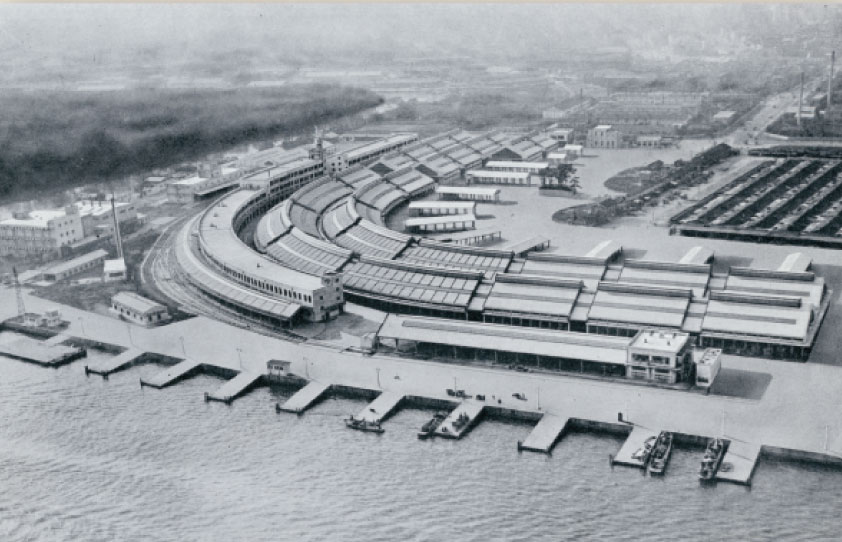
Tsukiji Main Market of the Tokyo Central Wholesale Market
1934
In 1928, construction of the Tsukiji Main Market began as part of the Tokyo municipal government's post-Great Kanto Earthquake reconstruction program. Manpower of about 420,000 and six years went into its construction, completed in 1934. The Main Market opened for business the following year. The low-roofed building on the right side of the photo is the Tsukiji Temporary Fish Market.
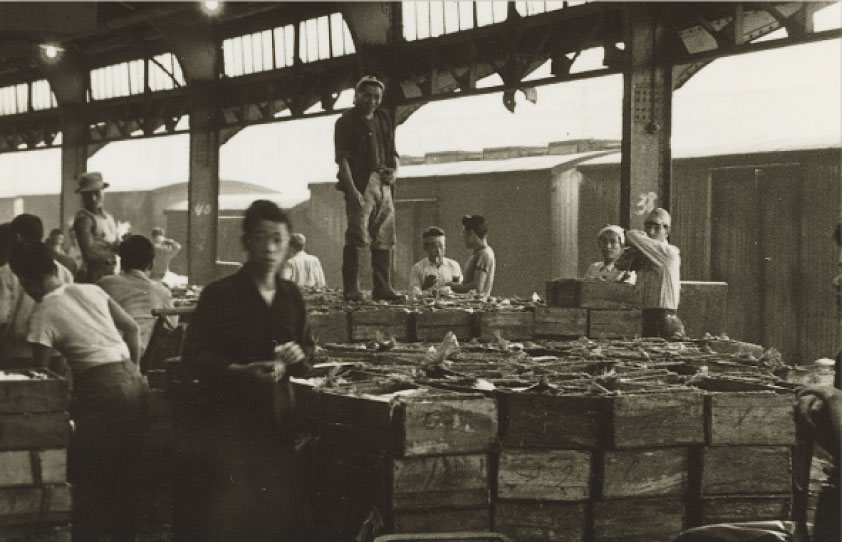
"Tokyo Market" Railway Station in Tsukiji Market
1935
When the fish market was located in Nihombashi during the Taisho era (1912-1926), most of the shipments arrived by freight cars. In the Tsukiji Market, a freight station of the Japanese National Railways, called "Tokyo Market" station, was built and the loading area served as an auction arena. Railroad transport reached its peak in the 1950s, and continued until the late 1980s.

Transformation of the Market into a Ration Center
1940
As Japan went on a war footing, the government set the prices of perishable goods and adopted the food rationing system. As a result, the "auctions"―the main form of market transactions―were no longer needed. The Tsukiji Main Market changed from a market to a ration station.
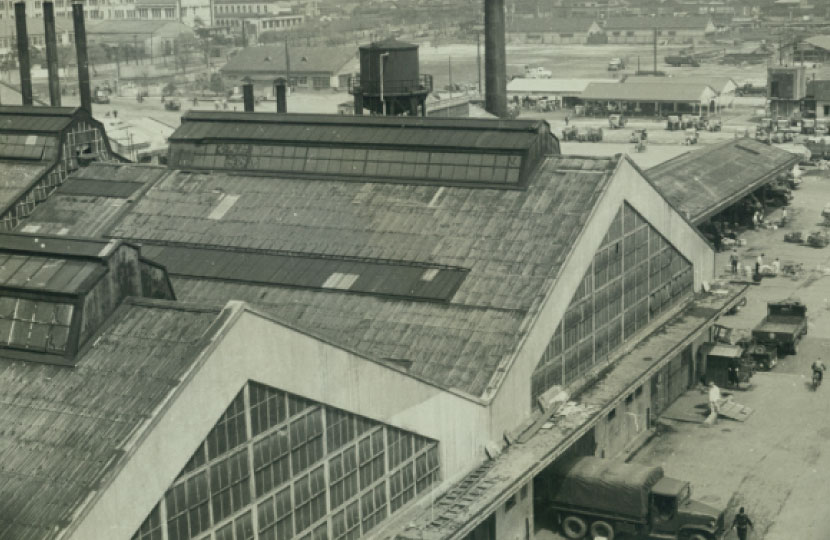
Tsukiji Market after World War II
around 1950
Following the end of WWII, in December 1945, roughly one-fourth of the Tsukiji Market was requisitioned by the General Headquarters of the Allied Forces (GHQ) for use as the military's parking space and laundry facilities until 1955. During this period, trucks loaded with laundry ran around the Tsukiji Market. Chimneys built for the laundry facilities can be seen in the photo.

Resumption of Fish Auction
around 1950
The price-fixing of fresh food was gradually lifted several years after the war. In 1950, the rationing of marine products was abolished, and auctioning returned to the market.
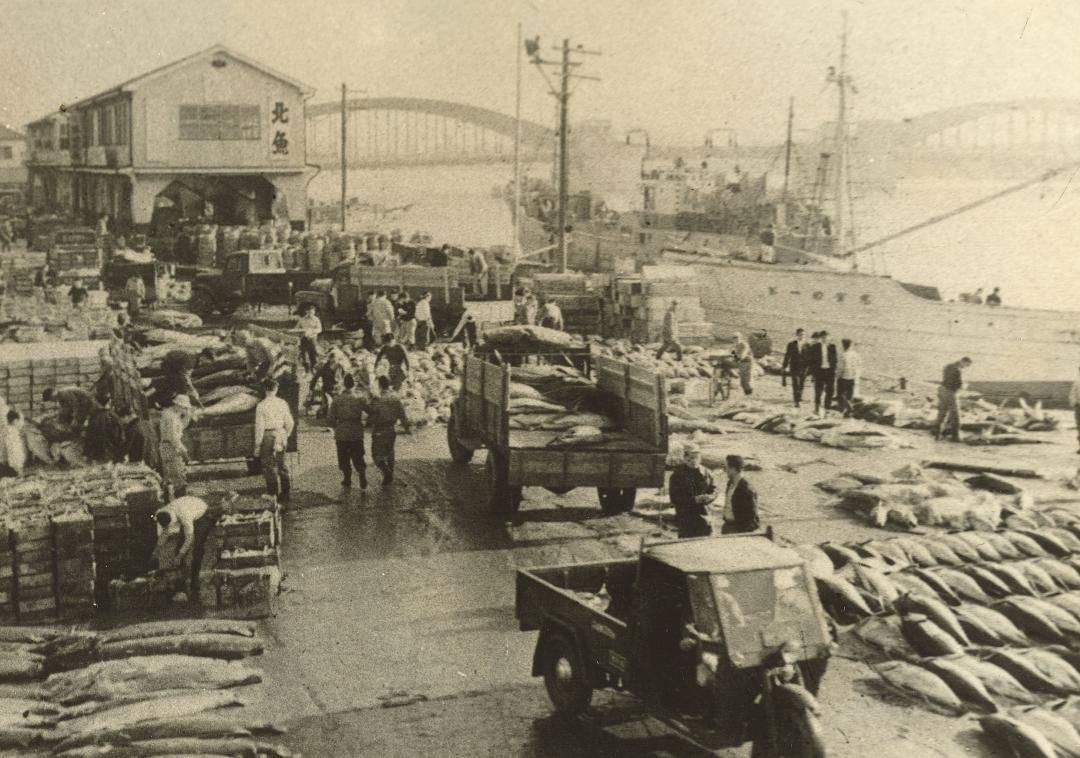
Beginning of Tuna Fishing over the High Seas
around 1960
After the end of WWII, the General Headquarters of the Allied Forces (GHQ) restricted the scope of Japanese fishing vessels' activities. When these restrictions were lifted in 1952, a huge rush for tuna fishing began in the high seas. Docks in Tsukiji were filled with tuna caught in waters around Japan and the world, leaving no space to stand.
Owned by Chuo Ward Kyobashi Library

Impact of High Economic Growth
from 1960 to 1970
Tokyo's population of 6.4 million at the time of the opening of the Tsukiji Market in 1935 surpassed the 10 million mark in 1962 during Japan's high economic growth. The transaction volume at the market also increased year after year. Trucks replaced trains as the main means of transporting shipments from across the country, and the Tsukiji Market―originally designed for distribution by rail―became packed with goods, people, and vehicles.
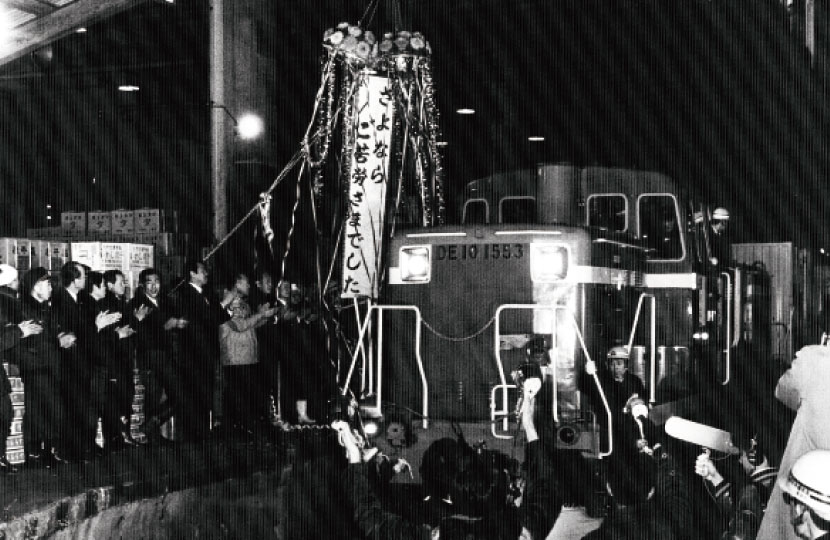
The Last Day of Rail Transport
1987
As a countermeasure for the rapid expansion of truck transport, in 1966 the Japanese National Railways developed a refrigerated freight car―which ran at a speed of 100 kilometers per hour―and introduced it to the Tsukiji Market to transport fresh fish. Truck transportation continued to grow, however, and, on January 31, 1987, market participants bid farewell to the 52-year-old railway transport service that had continued since the opening of the market.
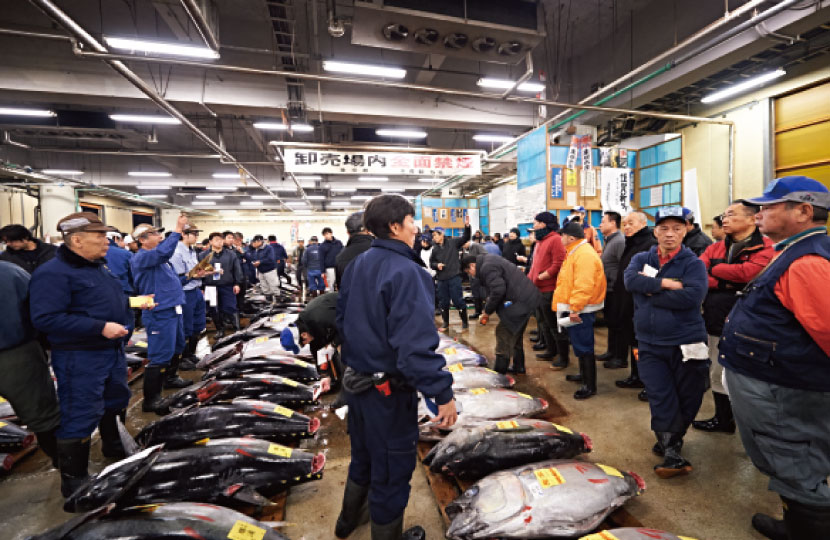
Traditional New Year Tuna Auction at Tsukiji Market
The first tuna auction of the year at the Tsukiji Market was a New Year tradition. The Marine Products Section of the Toyosu Market aims to enhance the market's brand appeal by building on the history and tradition starting from Nihombashi and passed down to the Tsukiji Market.

